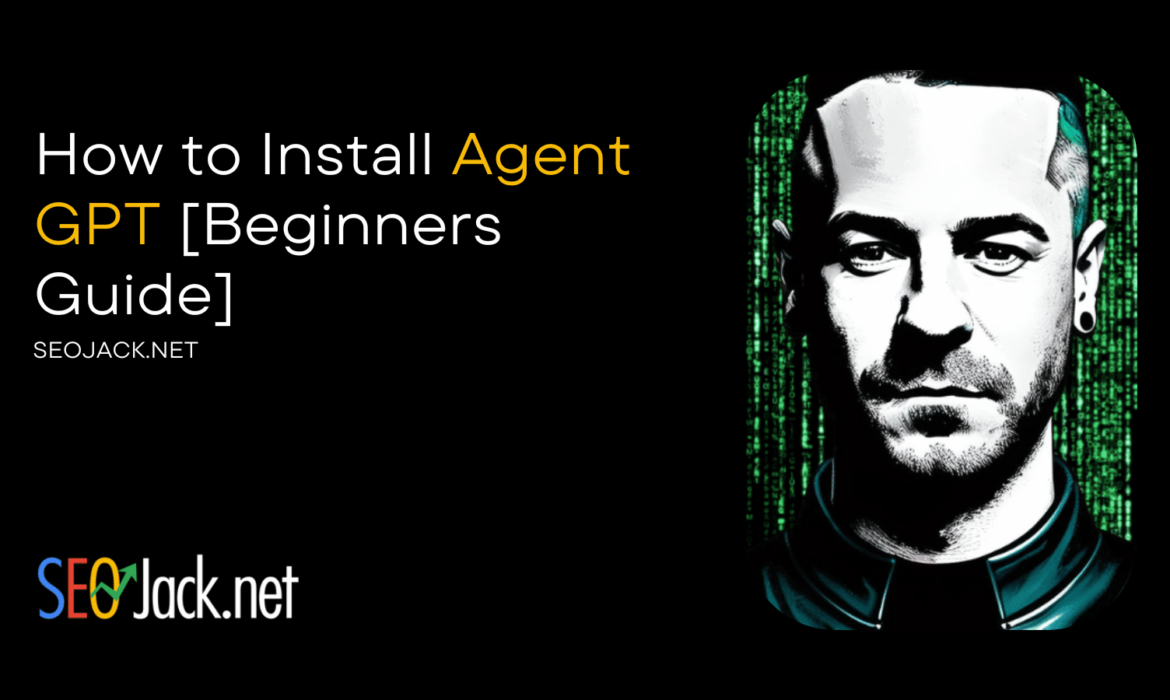If you’re looking for a powerful and customizable language model for your next project, AgentGPT is a great choice. With its state-of-the-art architecture and extensive training data, AgentGPT can handle a wide variety of tasks, from generating natural language text to answering questions and completing forms.
Here’s a step-by-step guide for installing AgentGPT on your local machine:
- First, make sure you have Python 3.7 or later installed on your machine. You can download Python from the official website: https://www.python.org/downloads/
- Next, clone the AgentGPT repository from GitHub by running the following command in your terminal or command prompt:
git clone https://github.com/reworkd/AgentGPT.gitThis will create a local copy of the repository on your machine.
- Navigate to the
AgentGPTdirectory by running:
cd AgentGPT- Create a new Python virtual environment by running:
python -m venv venv- Activate the virtual environment by running:
source venv/bin/activateYou should now see the virtual environment name appear in your command prompt, indicating that you’re working within the virtual environment.
- Install the required Python packages by running:
pip install -r requirements.txtThis will install all of the dependencies needed to run AgentGPT.
- Start the AgentGPT server by running:
python app.pyThe server should start running and you should see a message indicating that it’s ready to accept requests.
That’s it! You’ve successfully installed AgentGPT on your local machine. To test it out, you can send a request to the server using a tool like Postman or by running a simple Python script. For more information on how to use AgentGPT, check out the official documentation on the GitHub repository.
If you run into any issues or have questions about how to use AgentGPT, don’t hesitate to reach out to the community for support.
I hope this guide helps you install AgentGPT and get started with using it for your projects. Please feel free to customize and use this HTML guide on your WordPress post as you see fit, and don’t forget to include relevant internal and external links to help your readers explore the topic further. If you have any questions or need further assistance, please let me know!How to Use AgentGPT
Now that you’ve installed AgentGPT on your local machine, you’re ready to start using it for your projects. AgentGPT is a versatile and powerful language model that can help you generate text, answer questions, and complete forms with ease.
Here’s a step-by-step guide for using AgentGPT:
- Start the AgentGPT server by running the following command in your terminal or command prompt:
python app.pyThis will start the server and make it ready to accept requests.
- To send a request to the server, you can use a tool like Postman or run a simple Python script. Here’s an example Python script that sends a request to generate text:
import requests
url = "http://localhost:5000/generate_text"
data = {"text": "This is a test sentence."}
response = requests.post(url, json=data)
print(response.json())In this script, we’re sending a request to the /generate_text endpoint with a JSON payload that contains a text prompt. The server will generate a response based on the prompt and return it in JSON format. You can modify the prompt and endpoint to suit your needs.
- Once you receive the response from the server, you can use it in your project as needed. For example, if you’re generating text, you might display it on a webpage or store it in a database for later use.
And that’s it! You’ve successfully used AgentGPT to generate text or complete other tasks. For more information on how to use AgentGPT and its various endpoints, check out the official documentation on the GitHub repository.
If you run into any issues or have questions about how to use AgentGPT, don’t hesitate to reach out to the community for support.
I hope this guide helps you get started with using AgentGPT for your projects. Please feel free to customize and use this HTML guide on your WordPress post as you see fit, and don’t forget to include relevant internal and external links to help your readers explore the topic further. If you have any questions or need further assistance, please let me know!SEOJACK
I'm an experienced digital marketing consultant with a passion for helping businesses achieve success in the online world. Over the years, I have honed my skills and knowledge in digital marketing, staying up-to-date with the latest trends and techniques to provide clients with cutting-edge strategies.
My approach to digital marketing is data-driven and results-oriented. I use advanced analytics tools to track performance and identify areas for improvement, and I work closely with clients to develop customized strategies that meet their unique needs and goals.
My commitment to excellence and my unwavering focus on delivering real, measurable results for my clients sets me apart as a consultant. I believe that success in digital marketing requires a combination of creativity, expertise, and hard work, and I bring all of these qualities to every project I work on.
Whether you're a startup looking to make a splash online or an established business seeking to stay ahead of the competition, I have the skills and knowledge to help you succeed. So if you're ready to take your digital marketing efforts to the next level, get in touch with me today and let's get started.

